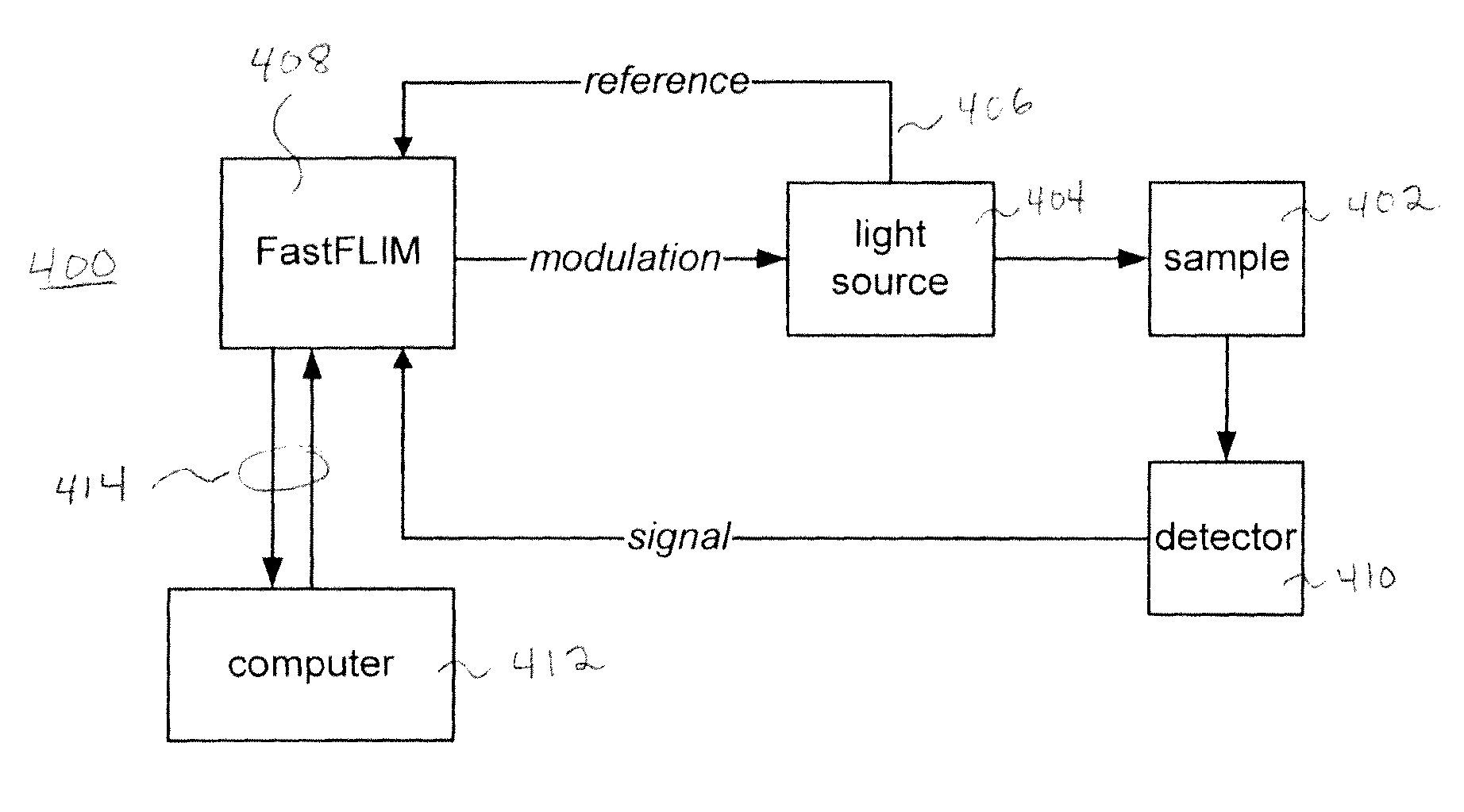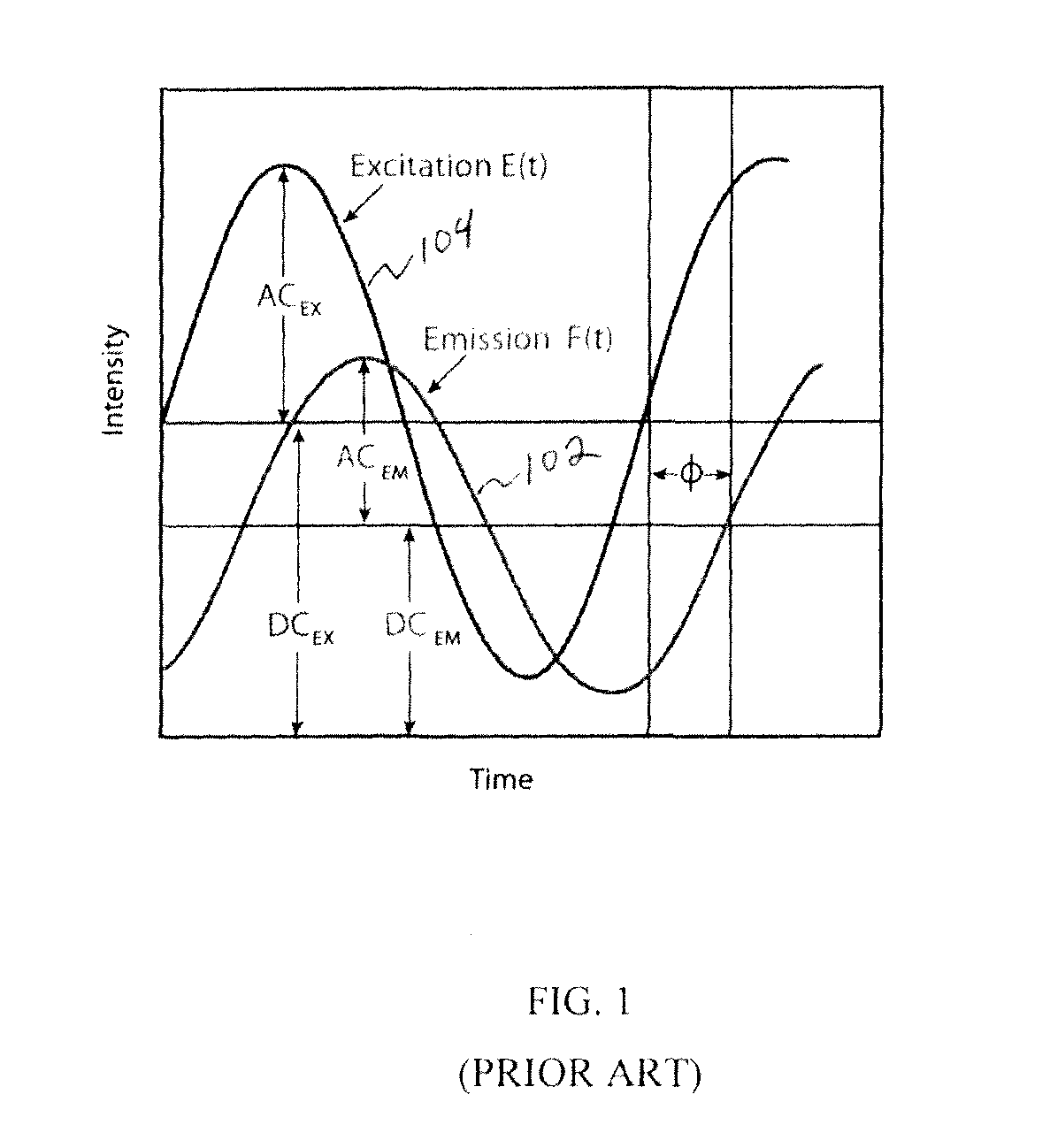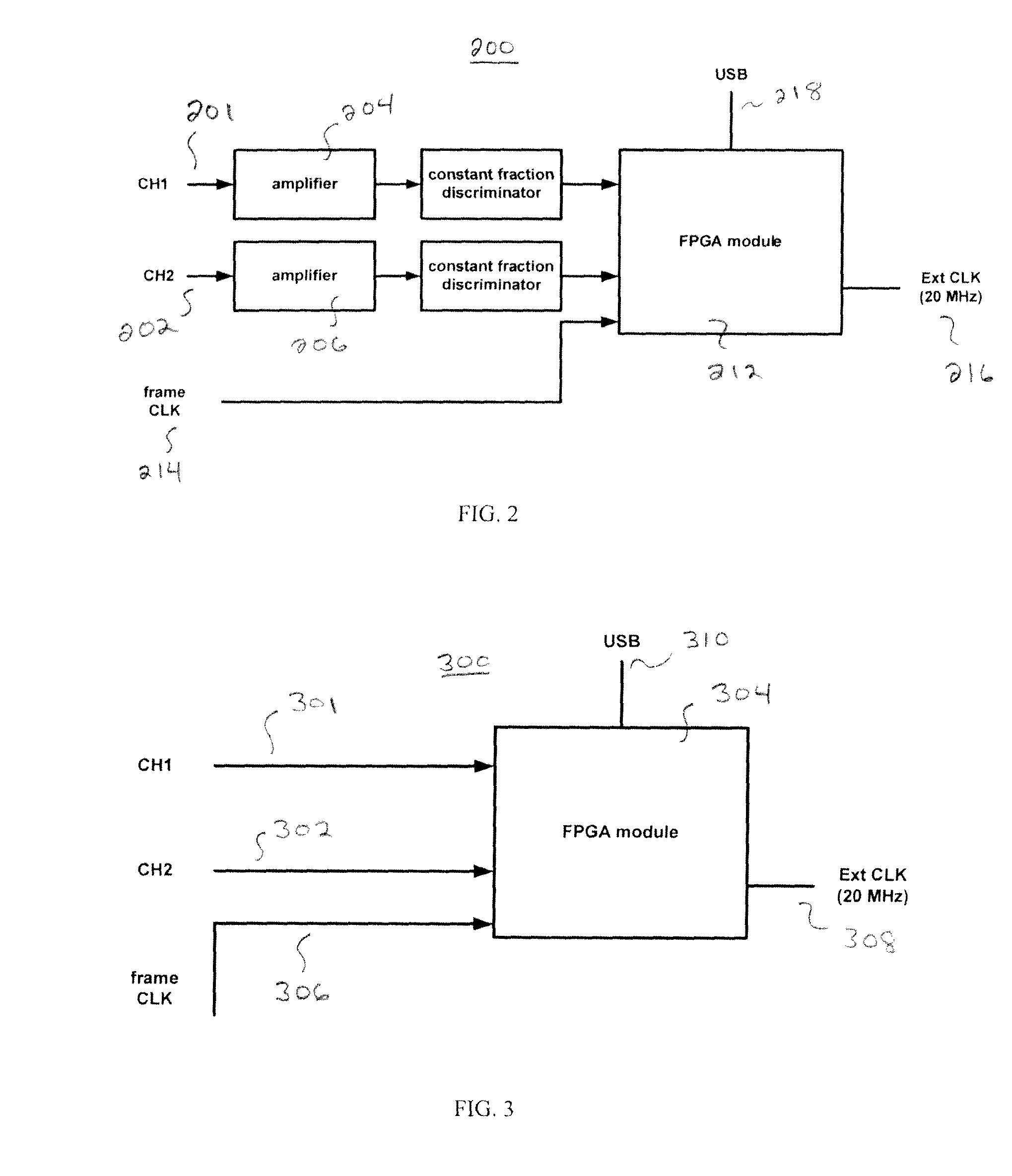System and method for digital parallel frequency fluorometry
a digital parallel frequency and fluorometric technology, applied in the field of analytical chemistry, can solve the problems of large reduction of detector efficiency, long dead time of data collection at a single frequency, and ineffective mixing scheme obtained for modulating the gain of detectors in parallel multifrequency instruments, etc., and achieve the effect of small and less expensive instruments
- Summary
- Abstract
- Description
- Claims
- Application Information
AI Technical Summary
Benefits of technology
Problems solved by technology
Method used
Image
Examples
Embodiment Construction
[0050]In digital heterodyning the cross-correlation frequency fcc is the difference between the sampling frequency fs utilized to probe the collect the data and the excitation frequency fexc of the light source, that is:
fcc=|fs−fexc| [7]
[0051]It is convenient to have for fcc a value that is an integer fraction of the sampling frequency; in an illustrative implementation:
[0052]fcc=fs256[8]
[0053]As a result,
[0054]fs=256255fexc[9]
[0055]That is, if the signals of the excitation light fexc waveform and the signal of the sampling frequency waveform are in phase at time t=0, they return in phase after 256 periods of the sampling frequency waveform. This time is also equal to:
[0056]T=1fcc[10]
[0057]In other words, given a set sampling frequency fs, the inverse of the cross-correlation frequency fcc is time the sampling window slides through the entire 255 waveforms of the excitation pulses; these correspond to the number of waveforms of the emission response of the sample.
[0058]The samplin...
PUM
| Property | Measurement | Unit |
|---|---|---|
| frequency- | aaaaa | aaaaa |
| frequency | aaaaa | aaaaa |
| modulation frequency | aaaaa | aaaaa |
Abstract
Description
Claims
Application Information
 Login to View More
Login to View More - R&D
- Intellectual Property
- Life Sciences
- Materials
- Tech Scout
- Unparalleled Data Quality
- Higher Quality Content
- 60% Fewer Hallucinations
Browse by: Latest US Patents, China's latest patents, Technical Efficacy Thesaurus, Application Domain, Technology Topic, Popular Technical Reports.
© 2025 PatSnap. All rights reserved.Legal|Privacy policy|Modern Slavery Act Transparency Statement|Sitemap|About US| Contact US: help@patsnap.com



